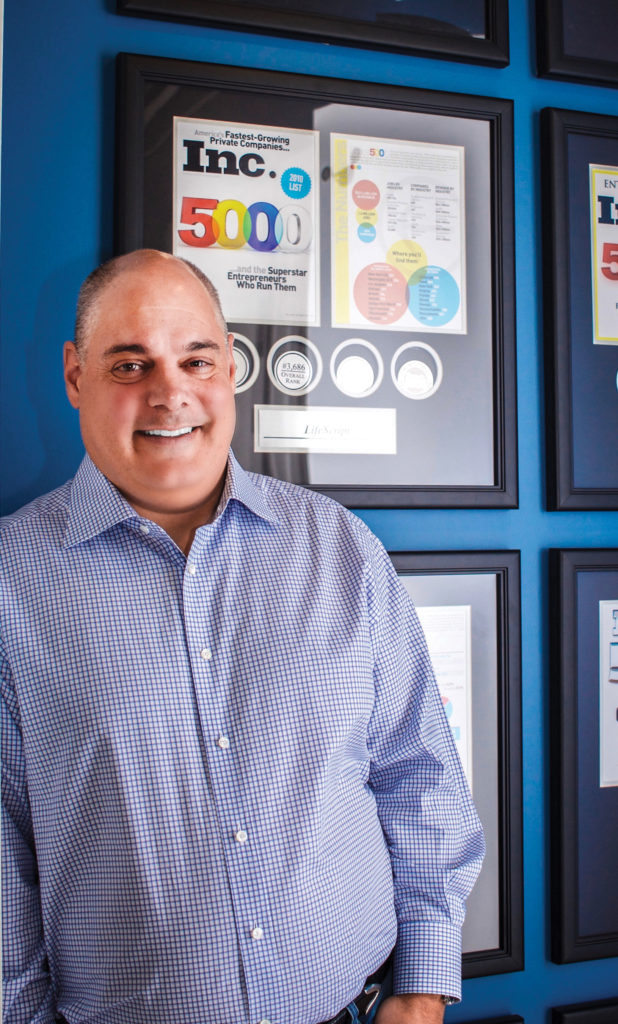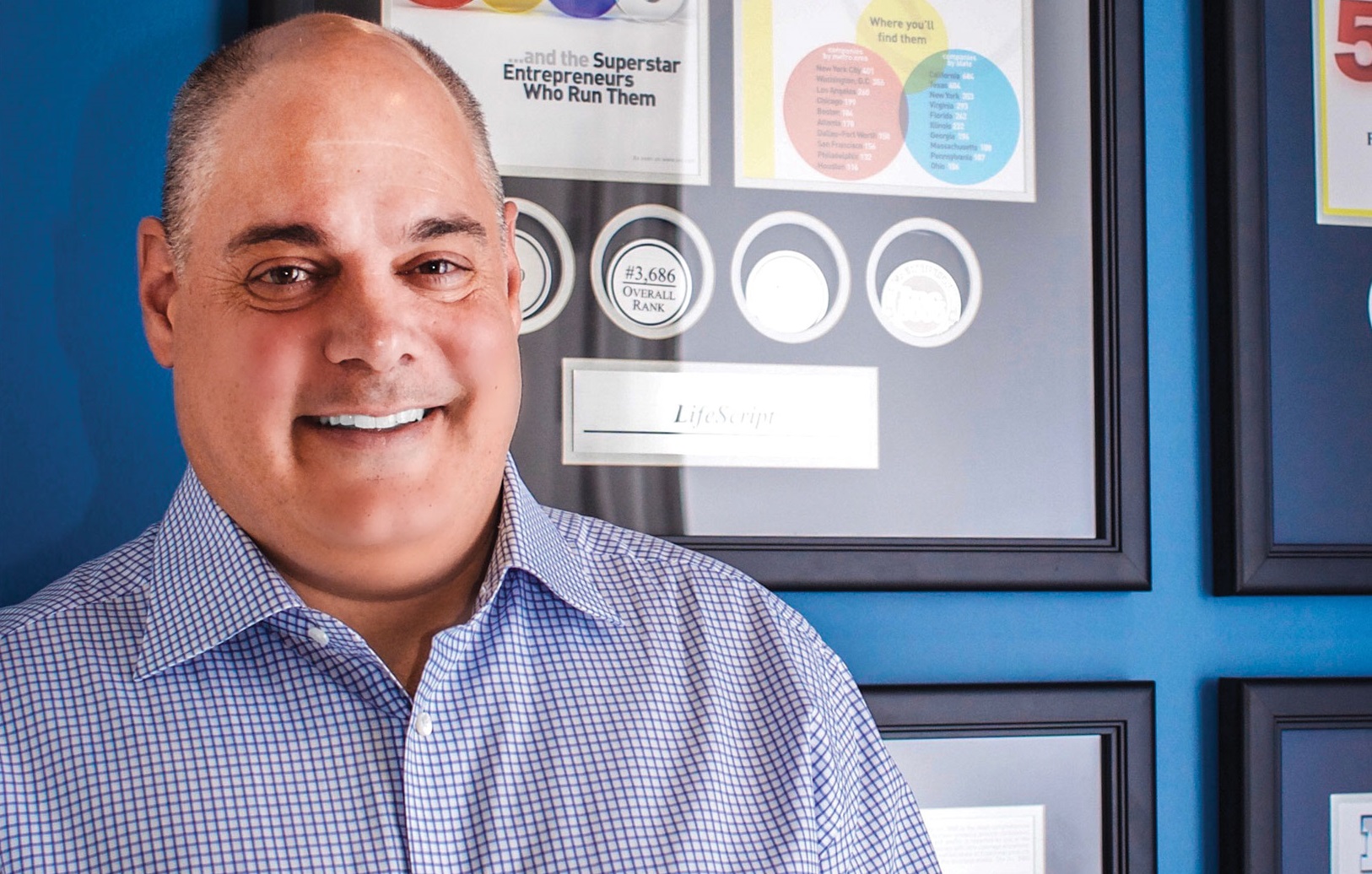Ron Caporale started his career at Goldman Sachs, but with an interest and background in both digital publishing and Internet marketing, Ron shifted to healthcare and eventually joined Lifescript. Seeing a largely unmet need for appealing and useful healthcare information for women, he transformed the company into a Top 10 website for women seeking health information. PM360 spoke to Ron about his journey, his mission and his excitement in delving deeply into programmatic buying—something that will soon take pharma marketing by storm.
 PM360: Ron, can you tell us how you arrived at where you are today with Lifescript? You have certainly built on many past successes.
PM360: Ron, can you tell us how you arrived at where you are today with Lifescript? You have certainly built on many past successes.
Ron Caporale: I came to Lifescript with a background in digital publishing and Internet marketing combined. After some time at Goldman Sachs, I did a tour of duty as EVP of eDiets and General Manager of iVillage, and also as a long-term consultant to TheStreet.com. Shortly after I arrived here, we began the process of transforming Lifescript’s newsletter database into what’s now a Top 10 health destination for women.
When we designed the site and developed the editorial mission, we realized that although the vast majority of consumers of health information on the web were women, all of the health sites then were gender neutral at best. We saw a real opportunity to distinguish ourselves in this marketplace.
So how did you address that opportunity?
With the guidance of our Chief Medical Officer, Dr. Edward Geehr, and our Editor-in-Chief, Laurie Berger, we focused on approaching health in a way that women told us was more appealing. We focused on becoming more accessible, relatable, less intimidating, and more holistic. We created a look, feel, and a voice that spoke to a female audience differently than competitors did. It’s worked really well for us.
So you found an unmet need that you could fulfill?
Yes. The core organic audience was simply underserved. And we had the luxury of building something from scratch—we wanted to fill that void. Previously, at eDiets, we created an important resource for people to tackle what’s a very large health problem and witnessed how involved users were and how meaningful it was to them. In the case of Lifescript, it was appealing to build a resource to help people as they’re making some of the most consequential decisions in their lives—decisions about their health—and provide information they can trust.
Can you expand on how Lifescript is going about this mission?
We’ve focused on staying true to the goal of providing best of breed content to users in a format that resonates with our demographic. Our partnership with Cedars-Sinai Medical Center helps us to deliver deep, authoritative condition-specific content that speaks to the physical and emotional needs of consumers. The success of that focus is borne out in the quality metrics of our audience—time on site, pages consumed—are all robust. So we’re on the right track.
Can we talk about what you are doing with programmatic in this space?
We’re always looking for innovative ways to help our clients reach our audience more efficiently. And in this business, efficiency means sharing advertising and information with users for products they want on the device they want when they’re most interested in receiving that information. So it’s the focus on targeted and relevant communication—where the user wants it, when the user wants—that sets us apart.
In terms of programmatic, we recently launched a major product innovation, Lifescript Data Solutions, in the programmatic market space. We realized that as a byproduct of operating our core media business, we’d developed what’s probably the largest first-party condition-specific database in the U.S. We’re talking about a database of 150 million demographic profiles, 70 million of whom have declared an interest in receiving condition-specific information.
That’s extraordinary.
Yes, that’s extraordinary scale for this type of first-party, deterministic data. Lifescript is now the first health media company to make their database available to the programmatic exchanges.
So that is a distinction here. It’s important to note that I’m not talking about using data to target our own advertising inventory—commonly done by all of our competitors. What Lifescript can do is identify segments of people in our database who have said they want information on a particular condition and then allow them to be identified by deterministic cookies and mobile IDs for targeting on the broader web. That’s what’s new. This “opted in” audience can be made available to the media buying platforms and that data can be layered on to desktop, mobile, and video buys.
Ok. So that’s a big advance.
It’s doubly big because the programmatic space is very new to healthcare. Less than $400 million was spent programmatically out of the $6 billion in annual DTC budget last year. Compare that to a vertical such as travel and finance where 80% of the ad budgets are spent programmatically.
So it’s still an emerging technology for pharma, very much connected to all you do—and it’s catching on.
Right. One of the keys to our success is the diversity of solutions that we can offer. Between the flagship site at Lifescript.com, the data asset, and a very robust email and lead generation capability, we can offer really unique ways for advertisers to reach niche, condition-specific audiences at scale. And we’re the only health media company that has all of those platforms under one roof.
So I can boil down two important new insights. First, the cookie as we know it is dead. Probabilistic targeting doesn’t really cut it anymore. First-party deterministic data is where the programmatic industry is headed. The second: Big pharma is figuring out how to buy programmatically and will pursue it in a really big way, very soon. Pharma is moving into programmatic now, and you’re going to see a material push as we move into the 2018 buying season. The good news for us: We’re lucky enough to be out in front with a pretty valuable asset for all involved.





